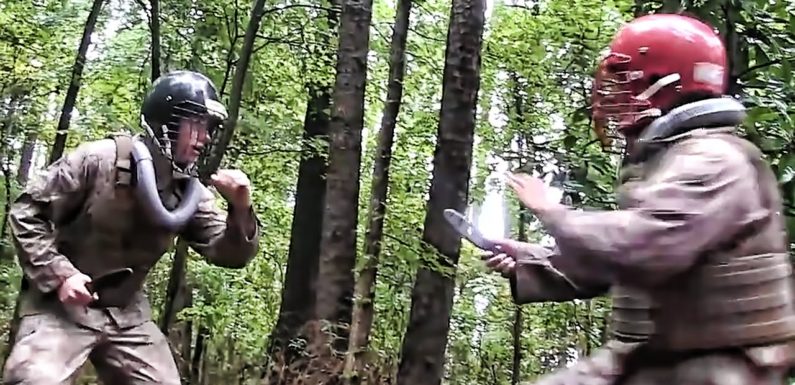
By COL Bill Connor
The top enlisted member of the U.S. Army, Sergeant Major John Wayne Troxel, recently posted on Facebook that remaining members of ISIS had two options: “Surrender or die.”
He further explained: “If they surrender, we will safeguard them to their detainee facility cell, provide them chow, a cot and due process, HOWEVER, if they choose not to surrender, then we will kill them with extreme prejudice, whether that be through security force assistance, by dropping bombs on them, shooting them in the face, or beating them to death with our entrenching tools.”
This caused predictable shocked reaction from mainstream media sources. Some media outlets asserted this alleged shocking statement “raised eyebrows” among politicians. The ABC News headline was similar to others in misconstruing Troxel’s message – “Pentagon’s top enlisted member suggests fatally beating ISIS members with a shovel.”
What’s shocking to many of us in the military is not what Troxel posted, but the reaction of the media and so many not-familiar with war. Let me explain.
First, it is obvious, but bears repeating: War is not a game.
In World War II, and specifically as American involvement ramped up in 1943, the War Department produce a short film clip entitled, “Kill or be killed.” This was directed at the American public as much as incoming servicemen. The point of the film was explaining the harsh reality of war compared with sporting events with rules. As the film helped make clear to the American people, at a time when millions of their sons were heading out to face the existential threat of the Japanese and Nazis: Americans must have the mindset of “kill or be killed.”
In facing the enemy in war, you must kill with whatever means available and with any advantage possible. About the same time the film was released, U.S. Army Gen. George S. Patton, Jr. put it even more succinctly. “Nobody ever one a war by dying for his country,” he said. “He won the war by making the other poor bastard die for his country.”
This is all part of the warrior ethos.
In World War II, the American people either understood, or quickly came to understand, the nature of war.
In 2018, Troxel made clear that American soldiers should not mistreat those surrendering and should follow the laws of land warfare in that regard. I would also add that American soldiers should not target non-combatants, and my experience in war has been that Americans show the greatest restraint in that regard. However, when it comes to an active enemy, they must be killed with extreme prejudice.
In speaking to new service members, particularly those with the mission of direct combat, military leaders must ensure they know the nature of warfare.
Patton prepared his troops by asserting, “We’re going to kill those lousy Hun bastards by the bushel,” and added, “We’re going to use their guts to grease the treads of our tanks.” He was not referring to murdering prisoners; and, no, they would not actually use the dead to grease tank treads. Patton’s words were about ensuring his men were in the right mindset to kill armed adversaries without hesitation. The media at that time did not post, and would not have posted, the implied criticism we see today with Troxel’s remarks.
It simply wouldn’t have been a news story, as it would have been expected.
From personal experience, and that of what I’ve learned from military history, new military members need assurance that it is morally acceptable to kill. This is so they don’t hesitate and become victims.
Society rightfully teaches the unacceptability of violence in daily civilian life. Citizens are brought up that way, and Christianity clearly goes against violence and murder within the context of civil society. Jesus Christ’s teachings of turning the other cheek are clearly in this context.
War is different, and killing enemy combatants is morally acceptable and the only way to stay alive. Killing includes killing with whatever means available, including an entrenching tool if other means aren’t available. In fact, a British soldier recently used an entrenching tool to kill a Taliban fighter in Afghanistan after he ran out of ammunition and went hand-to-hand.
When I was in Afghanistan, the Gurkha soldiers with us carried sharp kukri knives to use if other weapons failed. They wouldn’t hesitate, and neither can those soldiers for which Troxel bears responsibility.
During the Obama Administration, tough talk about killing by top military leaders was frowned upon and therefore became rare. The news media and many Americans have become quite unaccustomed to leaders preparing men to kill.
As a positive sign, Troxel’s spokesman in replying to the ridiculous headlines did not apologize for the comments. He explained why those comments were important to soldiers going in harm’s way. Great way to respond!
With leaders like Secretary of Defense James Mattis, a retired U.S. Marine general-officer, now at the helm of the Defense Dept., many of us serving in the military are hoping to see more of a return of the emphasis on the warrior ethos.
As the World War II film made clear, all Americans are involved when the nation is at war and not just those at the front. We must all understand the nature of war and importance of the warrior ethos. To lose a war, particularly against an enemy like ISIS, would be catastrophic and irreversible.
As U.S. Army Gen. Douglas MacArthur said, “In war, there is no substitute for victory.”
The truth of it is, war is kill or be killed, including with an entrenching tool if necessary; and we need men like Sergeant Major John Wayne Troxel to continue voicing that truth.
– COL Bill Connor, a U.S. Army Reserve infantry officer, is a former senior U.S. military advisor in Helmand Province, Afghanistan.
[Pictured are U.S. Marines during close-combat training.]

